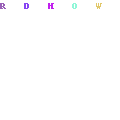alright so i found this on
adorama.
· B&W Neutral Density filters are available in most sizes and in the following strengths:
· .3 (2X) Reduces the light one f-stop.
· .6 (4X) Reduces the light two f-stops.
· .9 (8X) Reduces the light three f-stops.
· 1.8 (64X) Reduces the light six f-stops
· 3.0 (ten f-stops) & 4.0 (seventeen f-stops) are for astronomical and sun studies.
would it be good to get a couple of 2x and stack them or get maybe one of each and use as needed. i keep looking at the plate system and thinking maybe that and just a couple of plates. im still undecided on the route to go with this. so many choices
I gathered that your desire to get ND filters is to shoot waterfalls with long enough exposures to get that blurred silky water effect. So here's what you need to do:
Think about your waterfall shooting situations, what you want to do, and make some calculations.
Let's say that you're on a tripod and you're stopped down as far as you can on whatever lens you decide to use for some particular shot. Maybe that's f/16, maybe it's f/32 - I don't know. You're shooting at the lowest ISO setting your camera will allow, probably ISO 100 on the Canon model body you use. You're doing this to let in as little light as possible so as to lenthen your shutter time of course. Now, with that done, what's your shutter speed? Depends on the light at that location at that time of day under those particular conditions, right?
Let's just say that it's 1 second. What will a 1 stop ND allow you to do? It'll let you double that to 2 seconds. A 2 stop filter? 4 seconds. 3 stops? Double it again to 8 seconds. And so on.
But maybe the scene is brighter, or you can't stop it down as much because of compositional issues that you want to take advantage of, so your shutter is 1/125th. A 1 stop filter gets you 1/60th. 2 stops, 1/30th. 3 stops, 1/15th. 4 stops, 1/8 second. 5 stops, 1/4 second. 6 stops, 1/2 second. 7 stops, 1 full second. 8 stops, 2 full seconds of shutter time.
Add on a polarizer in any of those situations, and you can take it down another 2 stops.
So now the questions are, how long do you want to be able to leave that shutter open, how bright is the scene, and how much control do you want over your aperture?
The longer you want that shutter to be open and the brighter it is and the more control you want, the more ND you'll need to pull it off.
Now, all that said (to help you understand the dynamics of the situation), most waterfall shooters looking for that silky effect, in most situations, find that a polarizer and/or a 2 stop ND or gets them where they want to be, so that's probably a good place to start.
Will it cover every situation, especially if you want some seriously long shutter times? No. But how much do you need to get that silky effect? Depends on volume and speed of the water you're shooting, and the interpretation you want to present with your composition.
This was 10 seconds at f/22 on a bright sunny day with 6 stops of ND stacked up on a 18-55mm kit lens @ 18mm:
This was 1 second at f/32 on a bright sunny day with a 2 stop ND on a 28-135mm lens @ 95mm:
I've also seen plenty of silky effects at 1/15th second.
Hope that's helpful to you in some way.






![[No title]](/data/xfmg/thumbnail/41/41755-a922f39cc29ff8f6e66a197508bf99f3.jpg?1734176055)

![[No title]](/data/xfmg/thumbnail/38/38728-e8c32361443e4b671d8ef24d4dba6ef8.jpg?1734172599)
![[No title]](/data/xfmg/thumbnail/35/35952-55c8d42ec1c6ff0e13b45356cbf9c068.jpg?1734167758)


![[No title]](/data/xfmg/thumbnail/32/32926-ec27ecead8c80d803404500d8f888dbf.jpg?1734162683)
![[No title]](/data/xfmg/thumbnail/32/32929-22e23acc63d6ecb25e5ee941be87121f.jpg?1734162700)
![[No title]](/data/xfmg/thumbnail/42/42026-4f14b406e4eb9c886f454721fb021fba.jpg?1734176410)